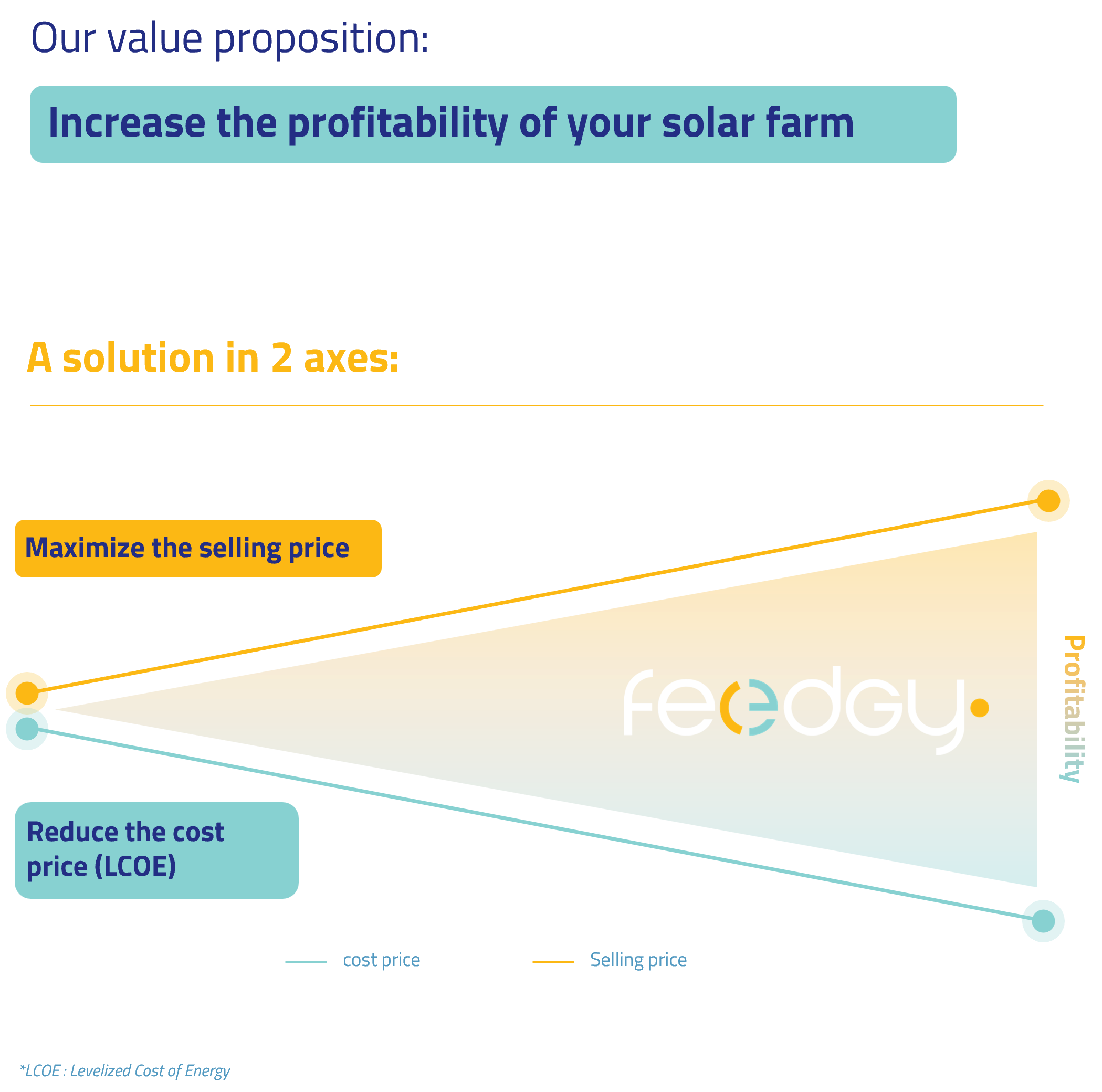Vision and Purpose
Feedgy's Reason for Being :
Fighting against climate change.
Europe's Challenges Response:
Being a long-term partner for farmers, placing them at the heart of tomorrow's energy offerings.
The Meaning of Our Offer:
The War in Ukraine
This recent geopolitical event highlighted the need for energy independence, a change in energy sources, and thus the necessity to create expertise and jobs in Europe.
50 Years of R&D
The technology is ready and competitive.
Why "FEEDGY"?
The Feedgy Islands are a witness to global climate change on an island scale.
The aim is to produce clean energy.
Phonetically, the Fiji Islands represent the manifestation of climate change.
"Feed-" in English means "to feed." To create services for our clients, we feed on the data collected.

Every morning, the sun rises first over the Fiji Islands, a vanguard: the vision that feeds innovation.
"-gy" refers to "energy" in English. The aim is to produce clean energy, enhanced by digital technology.

Phonetically, the Fiji Islands represent the manifestation of climate change.
"Feed-" in English means "to feed." To create services for our clients, we feed on the data collected.
Every morning, the sun rises first over the Fiji Islands, a vanguard: the vision that feeds innovation.
"-gy" refers to "energy" in English. The aim is to produce clean energy, enhanced by digital technology.
For Feedgy, the conclusion is clear:
The fight against climate change is happening today. The best tool for this is to offer a financially attractive alternative to fossil fuels. And the best renewable energy to achieve this goal is solar photovoltaic.
Our mission: To promote green, competitive, and sustainable energy through innovation.
Why solar?
Among all the renewable energies available on the market (wind, biomass, etc.), photovoltaic has many advantages:
- It's the only one whose costs decrease over time.
- Silicon is the second most abundant element on Earth (the main component of a panel).
- A solar panel is 97% recyclable.
- The carbon footprint is low = 40 to 55 grams of CO2/kW.
- The average energy payback time = 1.5 years, depending on the technology used and the installation location. At Feedgy, it's 1.2 years thanks to our technology.
- Can be installed in 6 to 8 months in the context of Repowering.
- The technology is common to chips in phones, computers, etc. It benefits from advances in semiconductors.
Easier to manufacture and implement, photovoltaic is the most competitive energy of renewable energies.
Why Now
In the face of the climate emergency, numerous solutions are available to us. Photovoltaic solar technology is best positioned to meet the growing market demand.
The War in Ukraine
This recent geopolitical event highlighted the need for energy independence, a change in energy sources, and thus the necessity to create expertise and jobs in Europe.
50 Years of R&D
The technology is ready and competitive.
Leveraging Advances from Other Sectors
- The same challenges and patents as in electronic chips.
- Miniaturization has led to improved surface efficiency.
- The current quality of silicon allows for an extension of lifespan: we use the same quality as in Apple phones.
Encouraging Solar by Lowering the LCOE
To honor Feedgy's ecological commitments, the objective is clear: we need to improve the profitability of photovoltaic solar energy and thus accelerate its deployment.

Encouraging Solar by Lowering the LCOE
- Sale Price
By creating an attractive market, the economic principles of increasing demand imply an increase in value: Feedgy contributes to making the advantages of solar increasingly powerful.
- Cost Price or LCOE
The industry has adapted, as feed-in tariffs have decreased, to lower its investment cost in year 0. This is known as CAPEX. The quality of equipment has followed the same trend. Solar panel components are the first to be affected. Ten years later, the damage is considerable.
To reverse this trend, the investor's indicator should no longer be just the CAPEX but also the LCOE, which takes into account the lifespan of the equipment. This approach is even more logical in a solar market that is entering the broader electricity market. The owner of the installation, like any business, must consider both its cost price and its selling price.
The LCOE (Levelized Cost of Energy) is a measure of the total cost of energy production for a given installation. It accounts for all costs related to a system over its entire lifespan with a ratio of "discounted" costs: the cost of energy production divided by the amount of energy produced.
Feedgy chooses its equipment from the best suppliers to maximize the productivity and lifespan of its installations. To go beyond what the market offers, we invest significantly in innovation to imagine new systems and tools that boost the performance of these materials.
Developing Solar on Existing Surfaces
The next challenge for photovoltaic solar energy as we know it lies in its deployment: given its success, the surfaces compatible with the installation of power plants will become increasingly scarce. Coexistence with the agricultural sector will create tensions.
Moreover, the growth of the market and global ambitions in terms of solar development are much faster than the updating of regulations.
With demand for surface area outstripping supply, unavailability will result in unstoppable financial speculation in the coming years.
To meet the needs and limit this phenomenon, Feedgy has chosen to develop solutions to optimize already exploited surfaces.
FOR MORE INFORMATION, CONSULT OUR REPOWERING OFFER
Local Anchoring for Decentralized Energy
The great strength of solar is its potential for implementation on a wide variety of surfaces. However, each territory has its particularities: climate, environment, regulations, etc. The possibility of using it on-site or within a close perimeter of its production site gives particular importance to producers: that is why Feedgy is committed to a long-term relationship with farmers, who are the main non-professional solar producers. Thanks to their resources of exploitable surfaces and their environmental commitment, they form the core of the mechanism for local production of tomorrow.